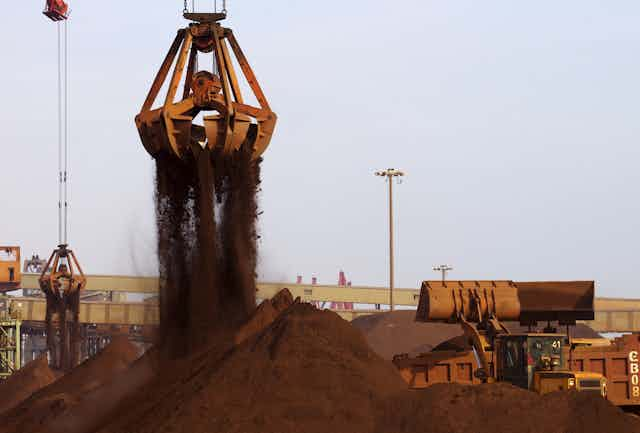The first years of the millennium were kind to government finances. A benign economic environment, and a once-in-a-century commodity boom fuelled by Chinese growth, helped the Federal budget to a cumulative surplus of $89.3 billion over the period 1999-2008.
The IMF notes that fiscal policy can either calm or magnify the effects of volatile commodity prices on the domestic economy. While some countries, such as Norway, have set aside the funds resulting from a commodity windfall for a rainy day, Australia has taken a different tack.
While net debt was paid down from +$53.1 billion (8.4% of GDP) to -$42.9 billion (-3.8% of GDP), the Howard government was among the most profligate in history. The structural integrity of the budget continues to be undermined by the spending commitments, tax cuts, and generous concessions (such as that on superannuation) made at that time. Since the global financial crisis, and ensuing fiscal stimulation, the federal budget has maintained a deficit, to the tune of an estimated $321 billion (cumulatively) by the end of the 2015-16 fiscal year.
How do commodity prices impact the budget?
While the price of crude oil (which liquefied natural gas prices are referenced against) and thermal coal peaked in 2008 (at the time of the global financial crisis), iron ore prices did not peak until February 2011. Each of the commodities so crucial to export revenue and budget stability have since declined in price by over 70%.
It is estimated that every $10 fall in the price of iron ore results in around $2.5 billion a year in lost tax revenue. A simple calculation suggests that the fall in iron prices from the 2010-11 peak (US$162 average) to an average of US$49.50 in this fiscal year makes a $27.5 billion dent in the budget.
However, royalties from the sale of commodity resources typically accrue to the states, so where is the link to the federal budget?
The most direct association is via the profitability of the resource sector – higher earnings should equate to a higher contribution in the form of corporate tax. There is also a multiplier effect whereby firms in complementary sectors (such as mining services) benefit from the boom and pay more tax. Additional staff are employed (often on higher salaries), contributing more income tax, spreading the wealth to the wider economy, and boosting economic growth.
The flipside is the detrimental impact on industries, such as manufacturing and tourism, which suffered as the Australian dollar rose in sync with the terms of trade. The budget has become ever more dependent on the resource sector.
Now, the cycle is in reverse. As the investment phase of the cycle ends, expensive cost structures start to be stripped back, fewer staff are required and related companies struggle. Lower commodity prices result in huge write-downs of existing projects and postponement of new projects which reduces both current and future tax revenue.
Treasury Secretary John Fraser recently stated that below expectation revenue collection is the major cause of deterioration in the budget position.
A Treasurer’s windfall?
Iron ore prices hit a low in December 2015, coinciding closely with the publication of the Mid Year Economic and Fiscal Outlook (MYEFO). At that time, Treasurer Scott Morrison painted a bleak picture of both the economic outlook and government finances. Forecast GDP was revised down to 2.75%, while assumptions for thermal coal (US$52 per tonne) and iron ore (US$39 per tonne) prices were lowered. The reduction in the iron ore forecast (from US$48 per tonne previously) reduced expected tax receipts by around $7 billion.
In the intervening period, commodity prices have generally risen sharply. Thermal coal prices have increased by 18%, while iron ore has bounced over 40%. This helped economic growth to beat forecasts and should allow for a more upbeat final budget outcome.
Importantly, recent commodity price increases should give Morrison a little more room for manoeuvre in the forthcoming budget. Ahead of a likely early federal election, surely there will be the temptation to use the windfall to entice voter support for a Coalition re-election.
However, with market commentators cautioning that the recent rebound in commodity markets is not sustainable one can only hope that historical mistakes of basing permanent promises on a temporary boom are not repeated.
A lesson for fiscal prudence?
There are some important lessons to be had from fiscal management in Australia - at both the state and federal level. Commodity prices are volatile and can result in significant gyrations in government finances and economic activity.
Ideally, fiscal policy should act as a stabiliser, building up a buffer during the boom years that can be drawn upon in the subsequent lean years - and helping to ensure that one generation doesn’t exhaust available resources to the determinant of the future generations.
Basing long-term, structural, policy decisions on a short-term, temporary boost can be a recipe for fiscal disaster. This is also relevant for state governments currently benefiting from a stamp duty windfall as a result of soaring house prices. At a bare minimum, sound fiscal policy should require that conservative assumptions be used in preparing budget forecasts.

